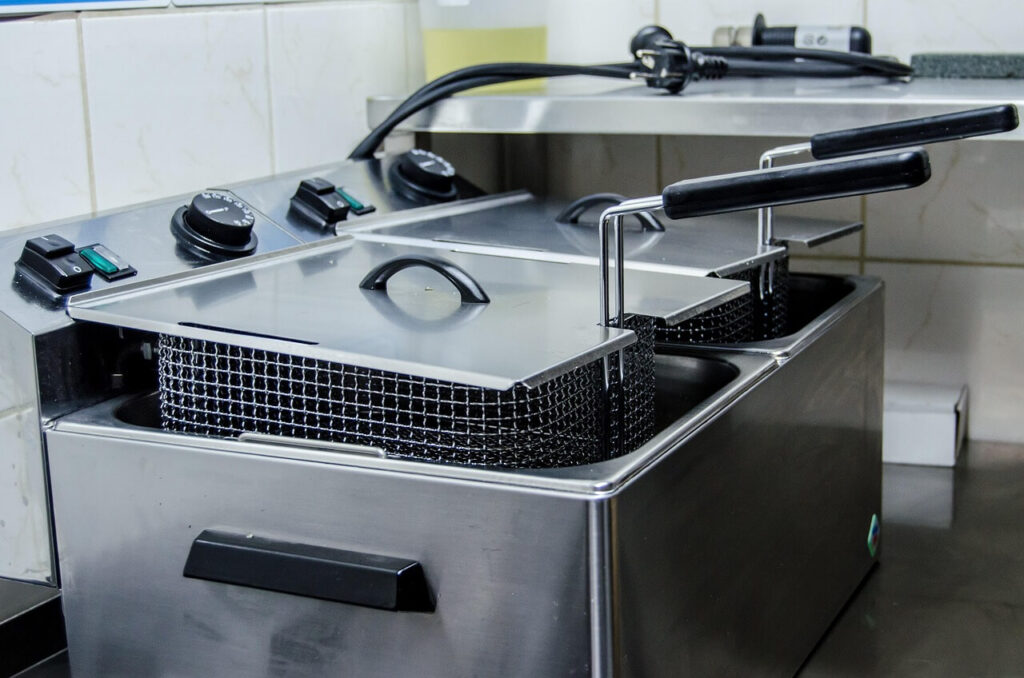The use of food grade stainless steel in the food processing industry is essential for ensuring safety, durability, and product quality. From production lines to kitchen equipment, the right stainless steel grade prevents contamination and withstands harsh environments. This material is popular among food manufacturers because it resists corrosion, supports rigorous cleaning, and ensures hygienic handling of food products. Understanding the differences between common austenitic stainless steels, such as 304 and 316, is vital for selecting the best materials for safe and efficient food processing equipment.
What Defines Food Grade Stainless Steel?



Food grade stainless steel is a category of stainless steel designed specifically for handling, processing, and storing food. Not all stainless steel is suitable for food applications. Food grade stainless must meet strict safety and hygiene standards to prevent chemical reactions with food and avoid the release of harmful elements.
This type of steel alloy typically has a high chromium content that forms a protective oxide layer on the alloy’s surface, significantly enhancing its corrosion resistance. Its smooth, non-porous surface prevents bacterial growth and contamination. Additionally, it must withstand continuous use temperatures, cleaning chemicals, and exposure to various food substances without degrading.
The Advantages of Stainless Steel in Food Processing
The food industry demands materials that can resist corrosion, endure high-pressure cleaning, and maintain food safety. Stainless steel food grade materials meet these needs due to their impressive durability and non-reactive properties. One of the most significant advantages of austenitic stainless steel alloys like 304 and 316 is their ability to resist corrosion caused by exposure to moisture, salt, and organic acids found in many foods, such as tomato sauce and vinegar.
Beyond corrosion resistance, the durability of stainless steel allows it to withstand constant mechanical stress, extreme temperatures, and aggressive cleaning routines. The smooth, stainless steel surface is easy to clean and sanitise, reducing the risk of contamination. Because of these properties, stainless steel remains the safest and most efficient choice for food processing applications.
304 Stainless Steel: The Industry Standard for Food Processing



304 stainless steel food grade is the most commonly used material in the food industry due to its cost-effectiveness and general durability. It contains 18% chromium and 8% nickel, giving it excellent corrosion resistance and a non-reactive surface. This composition makes it ideal for environments where equipment regularly comes into contact with food but is not exposed to aggressive chemicals or highly salty substances.
In the food sector, 304 stainless steel is widely used in the production of sinks, worktables, storage containers, and other food processing equipment. It performs well in environments handling dry foods, dairy products, and beverages. However, its performance may diminish in more corrosive environments, particularly when exposed to chlorides or acidic foods for extended periods.
316 Stainless Steel: Designed for Harsh Environments
For more demanding applications, 316 stainless steel offers superior protection against severe pitting corrosion and stress corrosion cracking. This grade includes 17% chromium, 10% nickel, and 2% molybdenum. The addition of molybdenum significantly improves its resistance to salt, acidic substances, and harsh cleaning agents. This makes grade 316 stainless steel the best choice for processing salty or acidic foods like seafood, brined products, and tomato juice.
In environments where equipment is frequently exposed to salt solutions, harsh chemicals, or high humidity, 316 stainless steel outperforms 304 stainless steel. Its high resistance to corrosion cracking ensures long-term durability, reducing maintenance costs and extending the lifespan of food processing equipment.
304 vs. 316 Stainless Steel: Key Differences Explained
Choosing between 304 and 316 stainless steel depends on the specific operational conditions in the food processing environment. While both are durable, the inclusion of molybdenum in 316 stainless steel gives it an advantage in corrosive environments.
| Feature | 304 Stainless Steel | 316 Stainless Steel |
| Composition | 18% Chromium, 8% Nickel | 17% Chromium, 10% Nickel, 2% Molybdenum |
| Corrosion Resistance | High, but limited in salty or acidic conditions | Superior resistance to chlorides and acids |
| Cost | Lower-cost option | Higher due to molybdenum content |
| Best Use Cases | Dry goods, dairy, beverage equipment | Salty, acidic, or chemical-intensive processing |
While 304 stainless steel is a lower cost alternative suitable for many applications, 316 stainless steel is more chemically resistant and ideal for environments requiring extra protection.
Applications of Food Grade Stainless Steel in the Food Industry
Food grade stainless steel is used extensively across the food industry for various applications due to its versatility. 304 stainless steel is commonly used in machinery parts, storage tanks, and general-purpose food processing equipment, where exposure to harsh chemicals is minimal. On the other hand, 316 stainless steel is preferred in environments dealing with salty foods, acidic products, and chemical exposure.
Additionally, ferritic alloys like 430 stainless steel are often used for decorative applications, splashbacks, and certain kitchen equipment components that are not exposed to corrosive substances.
Preventing Corrosion in Stainless Steel Food Equipment
Despite its resilience, even austenitic grades like 304 and 316 can suffer from stress corrosion cracking and severe pitting corrosion if not properly maintained. Corrosion typically occurs due to incorrect grade selection, harsh cleaning chemicals, or buildup on the stainless steel surface.
To mitigate corrosion risks, it’s important to choose the right grade stainless steel for the specific food processing environment. Proper cleaning using compatible agents and routine maintenance ensures the steel alloy retains its durability. Additionally, equipment should be inspected regularly for signs of wear, and any damage should be addressed promptly.
Why Choose Midway Metals for Food Grade Stainless Steel?
At Midway Metals, we supply premium food grade stainless steel products to meet the diverse needs of the food industry. Our range includes high-quality food grade steel sheets, tubes, and custom-fabricated solutions that guarantee durability, safety, and compliance with industry standards.
By working with Midway Metals, you gain access to expert advice on choosing the correct stainless steel grade for your operation. Our commitment to quality ensures that your food processing equipment performs at its best in any environment.
Conclusion
Selecting the right food grade stainless steel is crucial for ensuring food safety, operational efficiency, and equipment longevity in the food industry. Understanding the differences between 304 stainless steel food grade and 316 stainless steel helps industries choose the best material for their specific applications. Whether it’s for general-purpose use or for handling corrosive foods, high-quality stainless steel from trusted suppliers like Midway Metals ensures long-term performance and safety.
